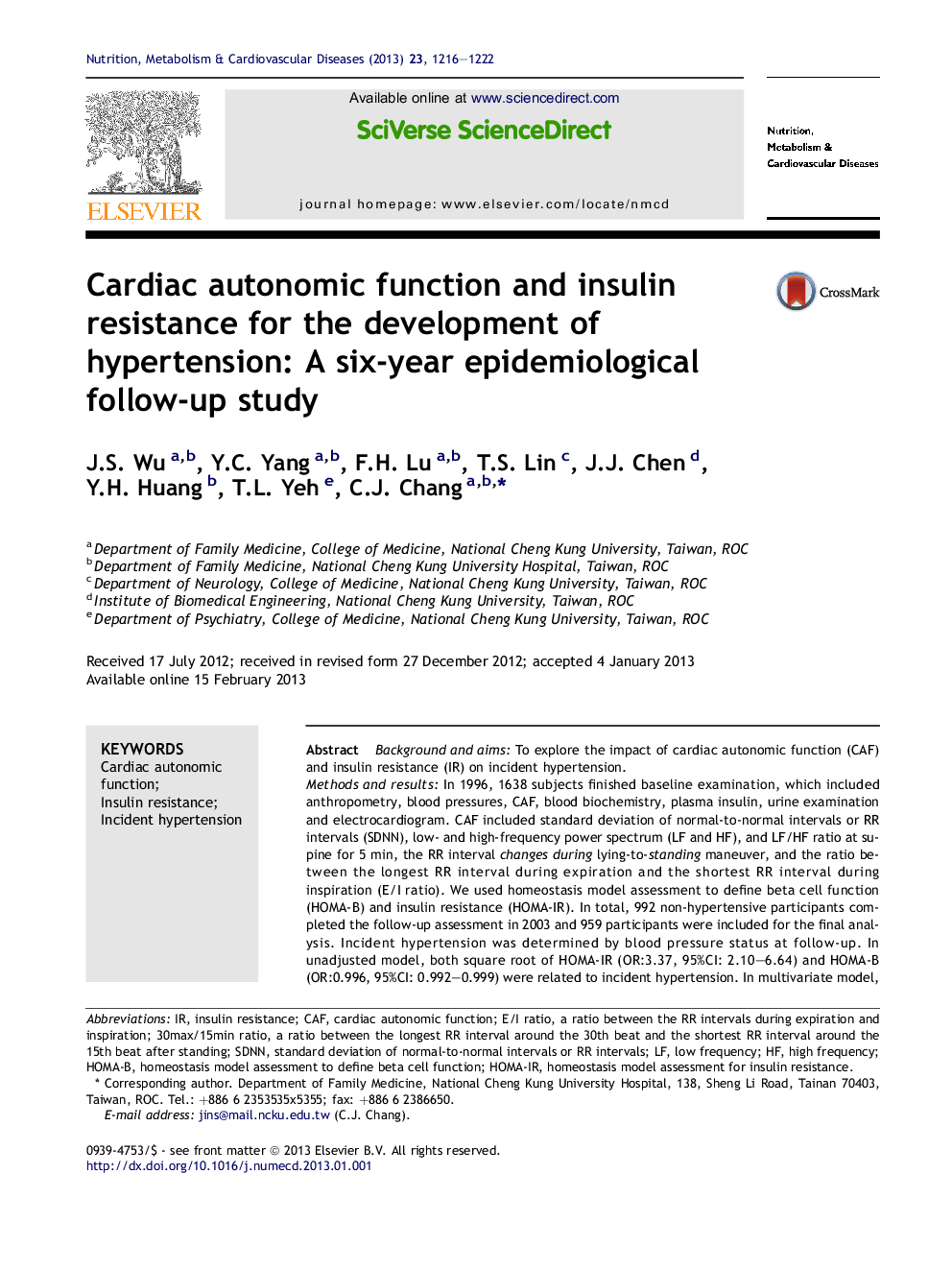| Article ID | Journal | Published Year | Pages | File Type |
|---|---|---|---|---|
| 3002188 | Nutrition, Metabolism and Cardiovascular Diseases | 2013 | 7 Pages |
Background and aimsTo explore the impact of cardiac autonomic function (CAF) and insulin resistance (IR) on incident hypertension.Methods and resultsIn 1996, 1638 subjects finished baseline examination, which included anthropometry, blood pressures, CAF, blood biochemistry, plasma insulin, urine examination and electrocardiogram. CAF included standard deviation of normal-to-normal intervals or RR intervals (SDNN), low- and high-frequency power spectrum (LF and HF), and LF/HF ratio at supine for 5 min, the RR interval changes during lying-to-standing maneuver, and the ratio between the longest RR interval during expiration and the shortest RR interval during inspiration (E/I ratio). We used homeostasis model assessment to define beta cell function (HOMA-B) and insulin resistance (HOMA-IR). In total, 992 non-hypertensive participants completed the follow-up assessment in 2003 and 959 participants were included for the final analysis. Incident hypertension was determined by blood pressure status at follow-up. In unadjusted model, both square root of HOMA-IR (OR:3.37, 95%CI: 2.10–6.64) and HOMA-B (OR:0.996, 95%CI: 0.992–0.999) were related to incident hypertension. In multivariate model, square root of HOMA-IR (OR:1.97, 95%CI: 1.05–3.70), but not HOMA-B, was associated with incident hypertension. After further adjustment for baseline CAF, the positive relationship between the square root of HOMA-IR and incident hypertension disappeared. In contrast, LF/HF ratio (OR:1.18, 95%CI: 1.01–1.37), HF power (OR:0.98, 95%CI: 0.96–0.999), and E/I ratio (OR:0.71, 95%CI: 0.54–0.95) were each independently associated with incident hypertension after further adjustment for HOMA measures.ConclusionSympathovagal imbalance with an apparently decreased parasympathetic tone is an important predictor of incident hypertension independent of IR.
